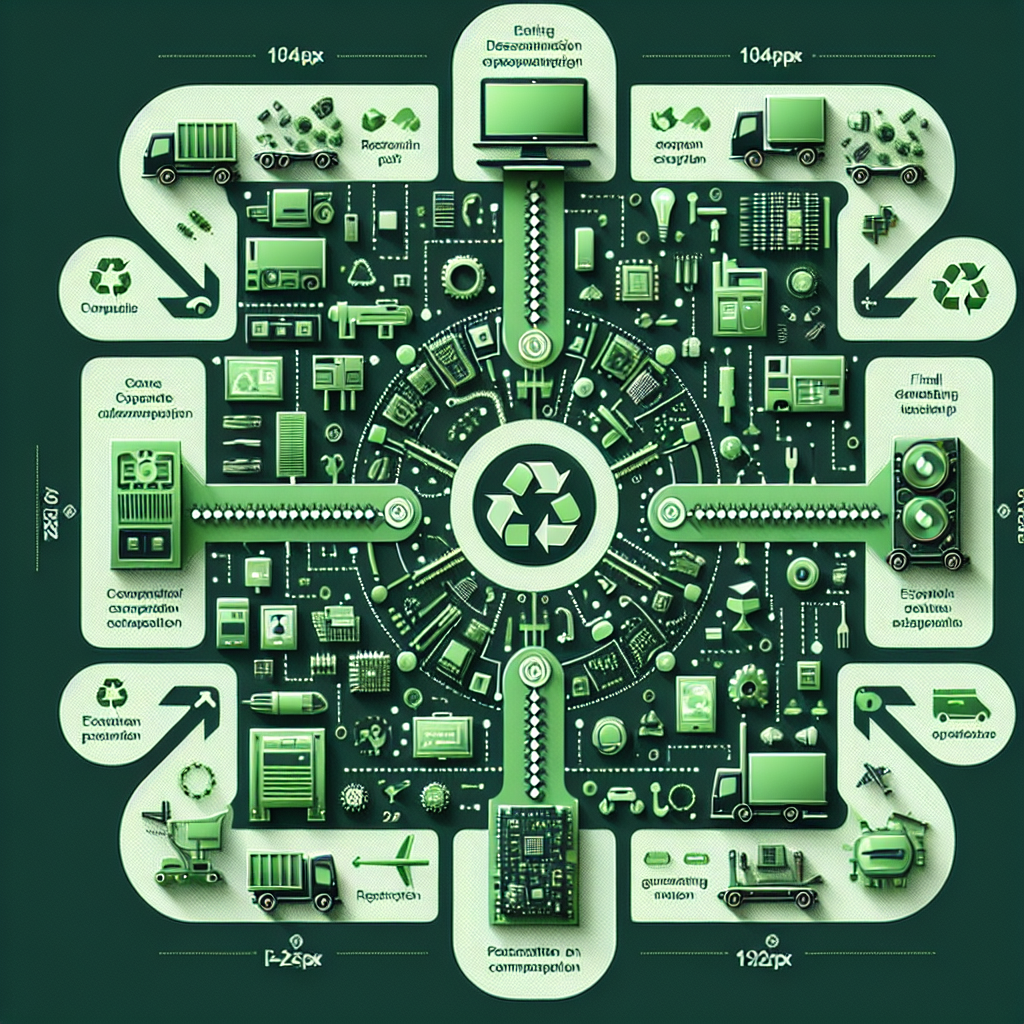Blog Ecobraz Eigre

Infographic: the fate of each electronic component after recycling
The recycling of electronic components is essential for sustainability and compliance with current environmental legislation, such as the Law No. 12.305/2010 (PNRS). This technical article details the destination of each electronic component after recycling, highlighting processes, recovered materials and the importance of proper handling for the B2B sector in ESG, EHS, IT, Purchasing and Legal.
Destination of Electronic Components After Recycling
After proper collection, which can be scheduled through specialized services at electronic waste collection, electronic components go through a series of processes to ensure that the materials are recovered and disposed of correctly.
Printed Circuit Boards (PCBs)
Printed circuit boards contain valuable metals such as gold, silver, copper and palladium, as well as plastic and ceramic materials. They are initially subjected to crushing and physical separation processes, followed by chemical methods to extract the precious metals. The copper is recovered for industrial reuse, while the plastic fractions are recycled or properly disposed of to avoid contamination.
Aluminum Components
The aluminum present in structures, heat sinks and housings is separated and sent for smelting, making it possible to reuse it in various industrial sectors. Aluminum recycling is energy and economically efficient, reducing the extraction of natural resources.
Technical Plastics and Thermosets
The plastics used in electronic components are classified as thermoplastics and thermosets. Thermoplastics can be recycled mechanically or chemically, while thermosets, due to their structure, are destined for energy recovery processes or controlled disposal so as not to compromise the environment, in accordance with CETESB standards.
Display glass
Glass elements present in monitors and screens are fragmented and sent for the manufacture of secondary raw materials, such as industrial sand, or for controlled disposal when contaminated with toxic substances.
Batteries and Accumulators
The disposal of batteries is regulated by the PNRS and specific technical standards. After collection, they are sent to specialized units where heavy metals and toxic substances are extracted for recycling or safe treatment.
Safe Disposal of Hard Drives and Media
For the safe disposal of hard drives (HD) and media with sensitive data, sanitization and physical or electronic destruction are recommended. Specialized services offer certified processes to guarantee information security, as can be scheduled via secure disposal of electronic data.
Applicable Legislation and Regulations
The recycling and handling of electronic components is mainly regulated by Law No. 12.305/2010 (PNRS), which establishes shared responsibility between generators, manufacturers and the public authorities. In addition, specific technical standards for disposal and recycling guarantee environmental and operational compliance.
Conclusion
The correct disposal of electronic components after recycling is a legal requirement and an essential practice for corporate sustainability and environmental protection. Detailed knowledge of the destination of each component enables decision-makers in ESG, EHS, IT, Legal and Purchasing to ensure the compliance and efficiency of processes related to the life cycle of electronic products.
The correct disposal of electronic components after recycling is a legal requirement and an essential practice for corporate sustainability and environmental protection.

Deixe um comentário
O seu endereço de e-mail não será publicado. Campos obrigatórios são marcados com *